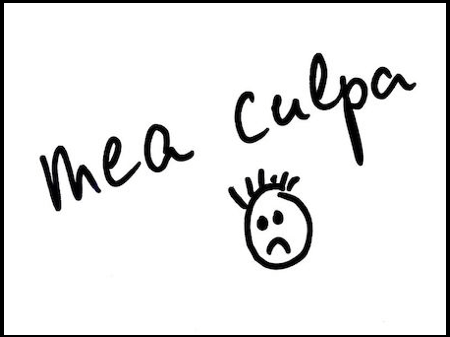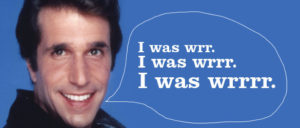 Do this one simple thing to build trust and unleash productivity.
Do this one simple thing to build trust and unleash productivity.
As an EOS Implementer, I’m always on the lookout for content that exemplifies core principles of the EOS Process™.
Recently, I rewatched a Simon Sinek TED talk on one of the principle roles of leadership – the establishment of trust.
A few minutes in, he lays down a huge “aha” moment:
‘The Military rewards people who sacrifice for others with medals. Business gives bonuses to people who sacrifice others for themselves.’ It’s the environment that dictates the action.
In The 5 Dysfunctions of a Team, Patrick Lencioni details the foundational elements that must be present in a highly functional team. The bedrock element of the foundation is Trust. Trust enables productive conflict that leads to great ideas and problem solving. Sinek argues that trust and resulting cooperation amongst team members are feelings. They aren’t dictated. A leader cannot order people to trust each other.
From where then does trust emanate?

Ever so cool, The Fonz just couldn’t come to say it.
From our earliest moments, we instinctively understand that the world is filled with danger. Who will feed us? Protect us? Allow us to be our best? If we are fortunate, we a born into and nurtured by a strong family and the safety to grow it provides. We develop resiliency, fortitude, cleverness, creativity and loyalty under its umbrella.
In the workplace, no such ready-made sanctuary exists. Leaders, however, can intentionally develop – through vision, communication, actions and consistency – an environment that permits teams and staff to operate without a debilitating fear of the unknown.
While we can’t control many external threats – the economy, competition, regulation, demographics and other, we can greatly influence the emotional safety within the organization. Why is this so crucial? When we have to expend energy protecting ourselves, inherently performance suffers.
Do individuals fear being admonished for expressing honest opinions and ideas? Are they wary of political retribution from colleagues and internal rivals? This type of emotional insecurity stifles risk taking of all kinds. Vetting of ideas and solutions are circumspect and not of much value. Creativity is stifled. New ideas are few and far between – except from those who hold power. Therefore, the edge that comes from a team that generates ideas and debates them rigorously is nowhere to be found.
If any of this describes your organization, then you are being robbed of your competitiveness – and you will surely underperform.
When safety reigns, teams do their best.
When leaders create an emotionally safe environment, their teams and professionals are far more likely to trust each other. They are more motivated, innovative and persistent. Of course, they’ll make mistakes…but they’ll feel empowered to drive the organization forward. To win.
For leadership teams that follow EOS® – they know they are responsible for creating that safe environment for people to do their best work.
So back to Lencioni’s foundation of trust.
The genesis of the desired environment is at the top – the emotional leader, the Visionary – and extends throughout the leadership team. They need to demonstrate their ability to be vulnerable.
One of the simplest things a leader can do to foster trust is to admit their mistakes.
Almost without exception, leaders have an ego, a firm belief in themselves. It’s that self-confidence that can be so infectious to the people they lead. It can be hard therefore, for a leader to admit they’ve made a mistake. They view it as weakness, but that couldn’t be further from the truth.
People find it enormously difficult to respect a leader that can’t admit their mistakes.
In his 2015 article in the Harvard Business Review, Jim Whitehurst, CEO of Red Hat – recently acquired by IBM for $34 billion – discussed how owning their mistakes is a key to employee engagement.
“I’ve learned that nothing builds engagement more than being accountable to the people in your organization…Being a leader doesn’t mean that you’re always right or that you won’t err. What being a leader does mean is airing the reasons for why you did something and then making yourself accountable for the results?”
“Who would you rather trust—the person who denies anything is amiss or the person who admits their error and then follows up with a plan to correct it? Better yet, what if that same person who admits they made a mistake reaches out to their team for ideas on how to make things right? I’ve found that leaders who show their vulnerability, and admit that they are human, foster greater engagement among their associates.”
Be Human
Great team builders understand that they and their people are human. They own their flaws every bit as much as their strengths.
When they make mistakes, they admit them and invite team members to examine the mistake and create solutions. I love chocolate chip cookies…man do I love them. But if Ruth Wakefield (of the Toll House Inn) hadn’t forgotten to buy some bakers chocolate for her cookie dough, her husband wouldn’t have suggested chopping up a chocolate bar to melt into the dough. The chocolate didn’t melt as expected and voila, chocolate chip cookies.
Some of the greatest inventions in history came as the result of addressing a mistake.
Don’t rob your organization of great discoveries. Make people feel safe enough to challenge ideas and try new approaches. Just admit when you’re wrong and watch all the good that happens.
A few quick EOS® tips
If your leadership team is executing it correctly, at the weekly Level 10 Meeting™, there is no place to hide.
As you follow through the review section of the agenda; scorecard, company rocks, personal rocks, employee and customer news and to-dos – individual progress is right there in black and white. Too many “off tracks” or “not dones” is an issue for the IDS™ section. And there it is.
During an IDS™ discussion, be ready to accept accountability if the issue is you.
- Own up to it. “It was me, and I’m sorry.”
- Address the situation and allow for clarifying questions.
- Ask for help in solving the issue if you need it.
- Promise you will be more accountable in the future and remind the team they have permission to hold you accountable.
Contact us about applying team health strategies to your EOS® implementation.
